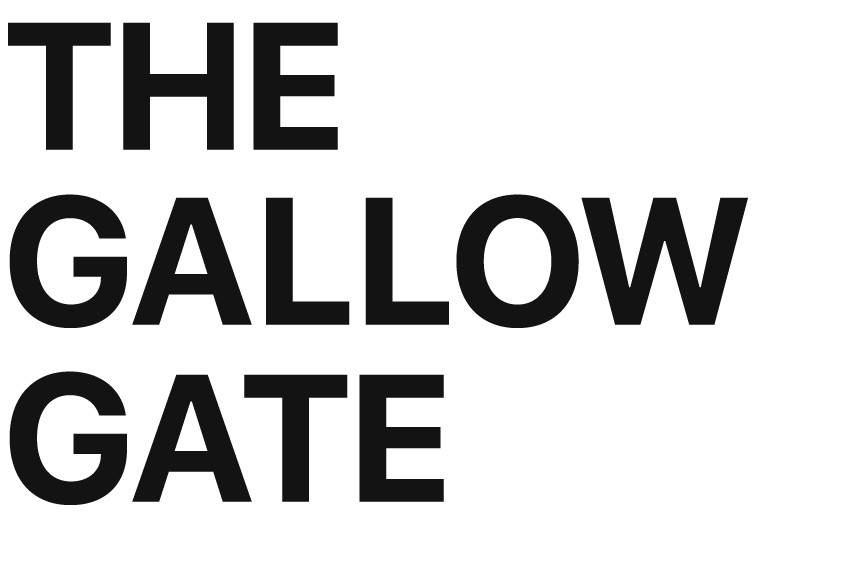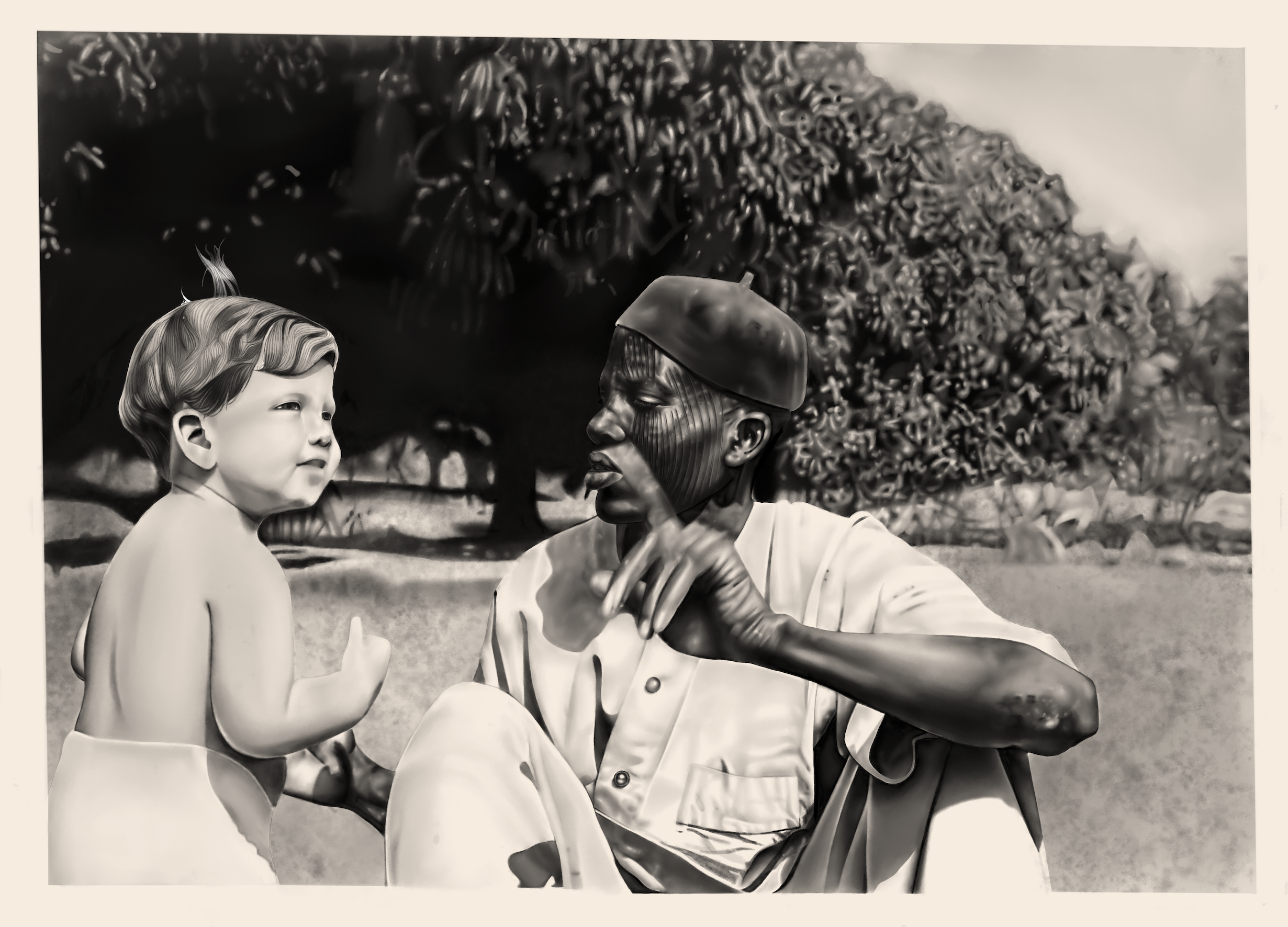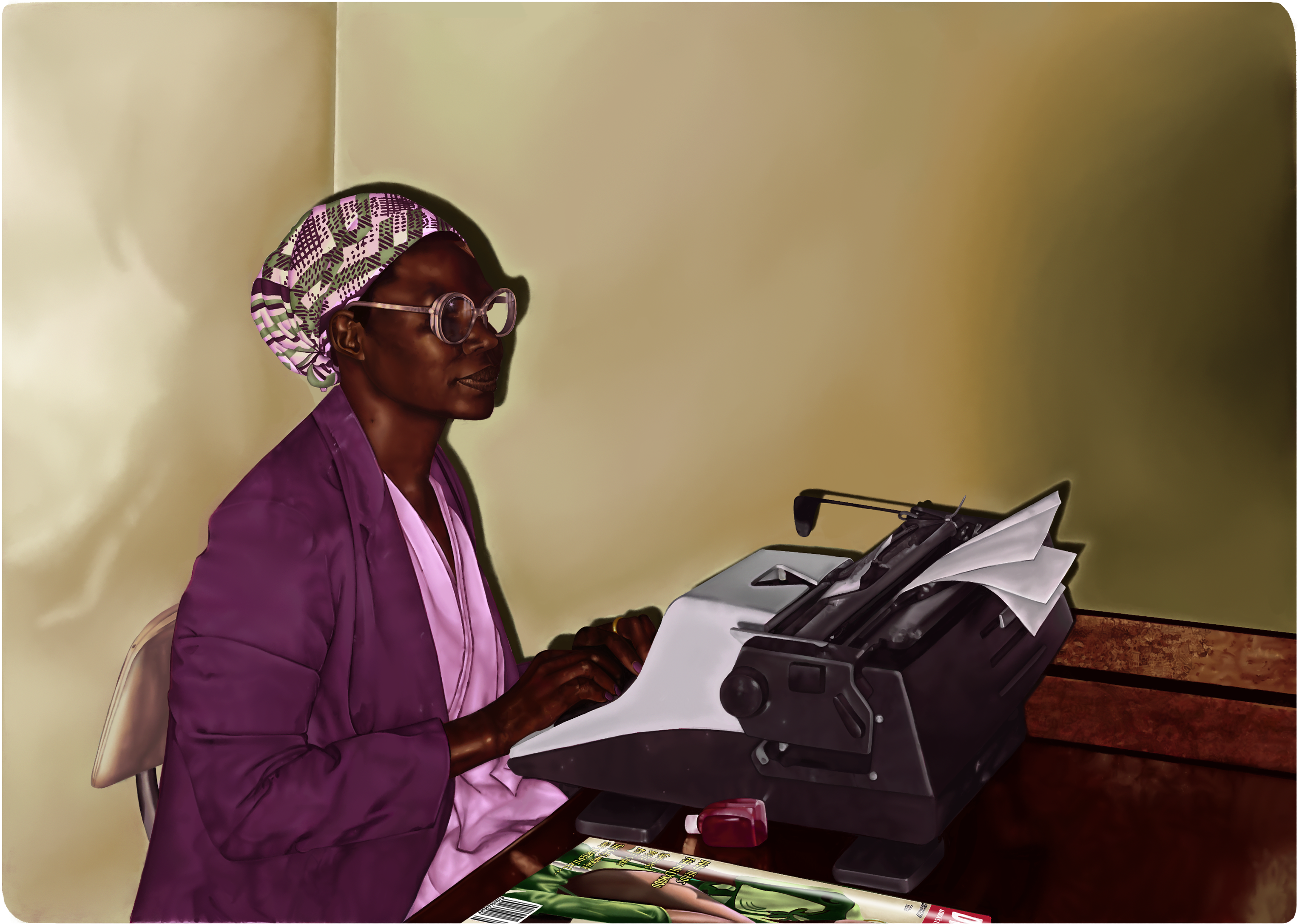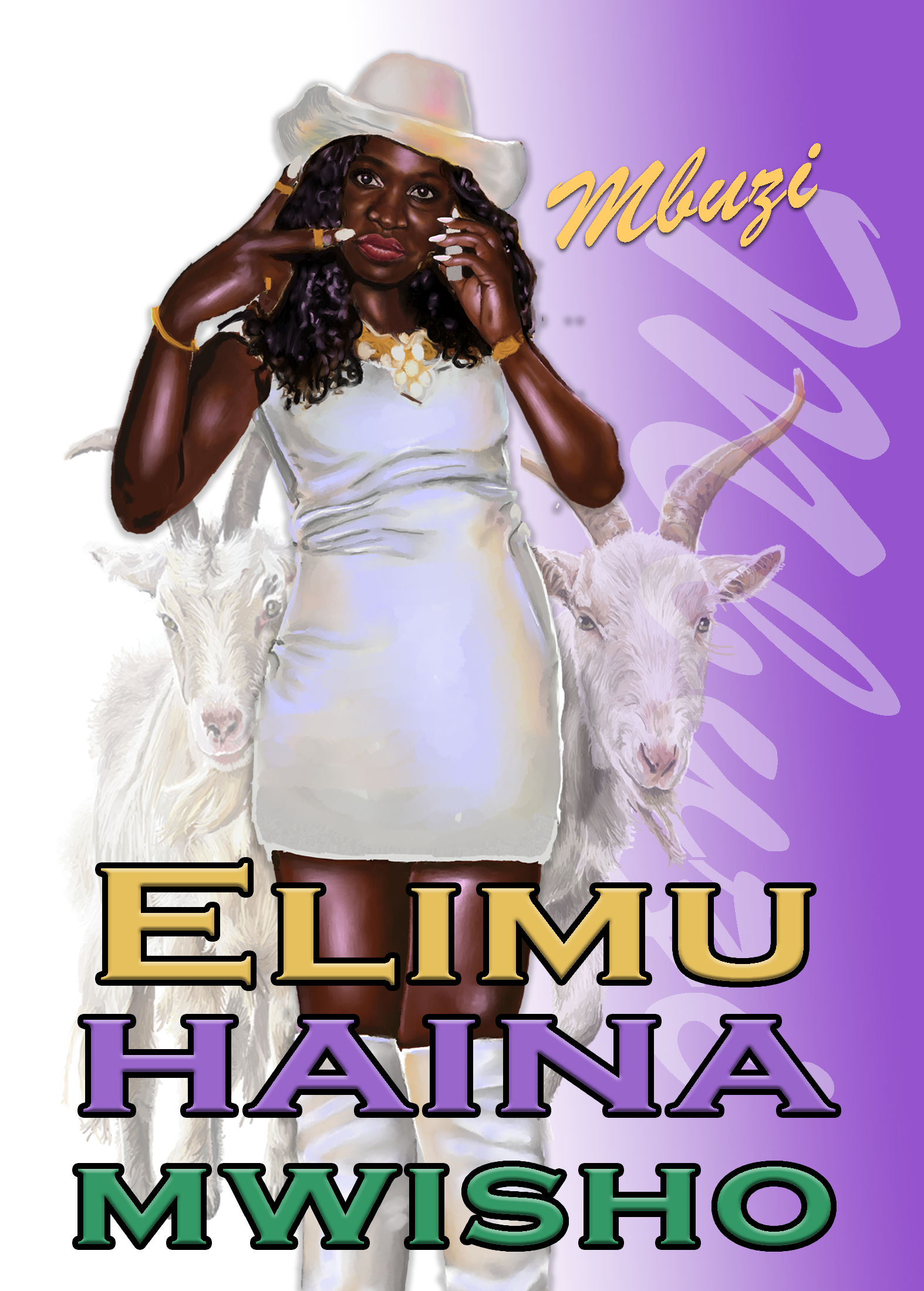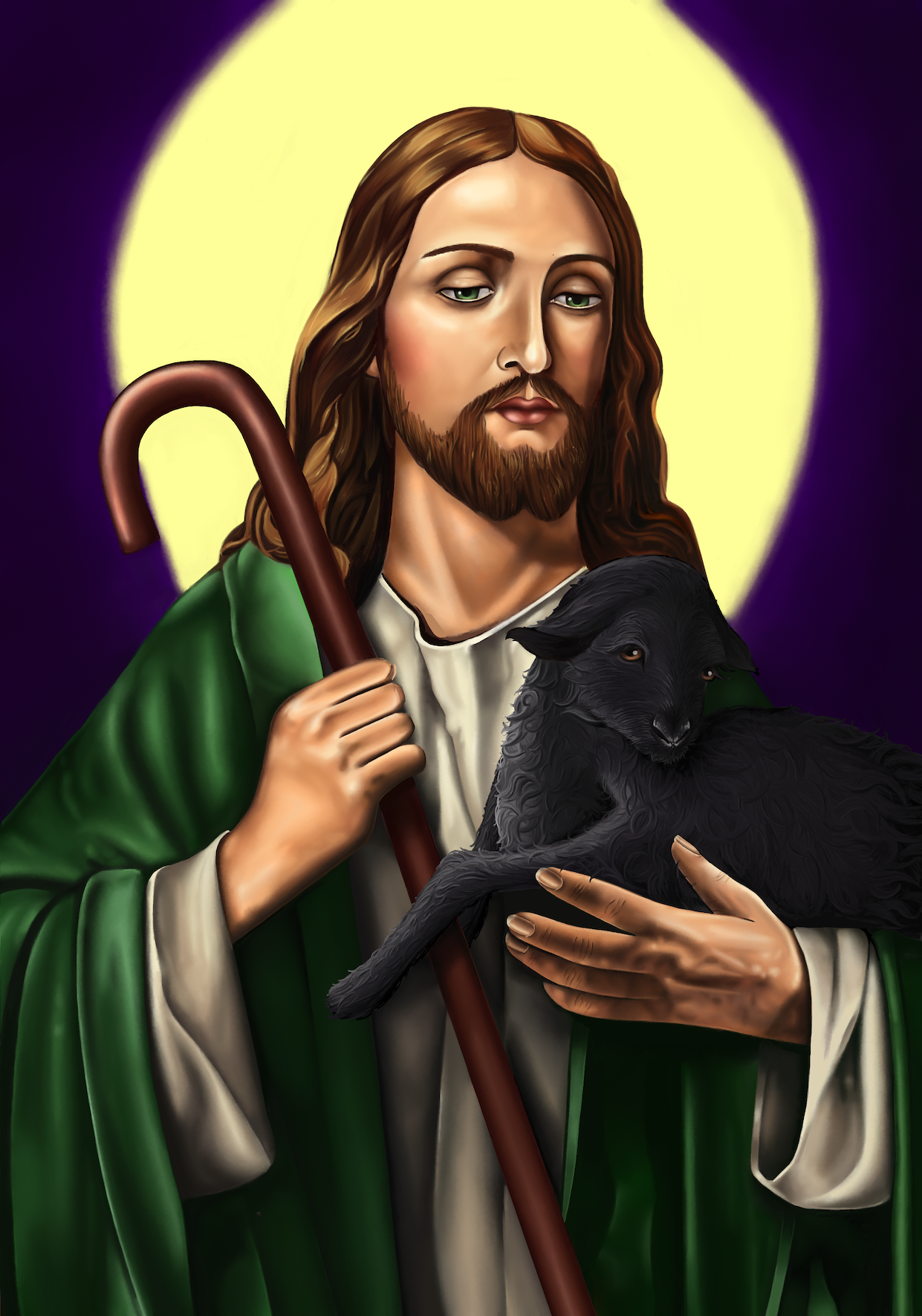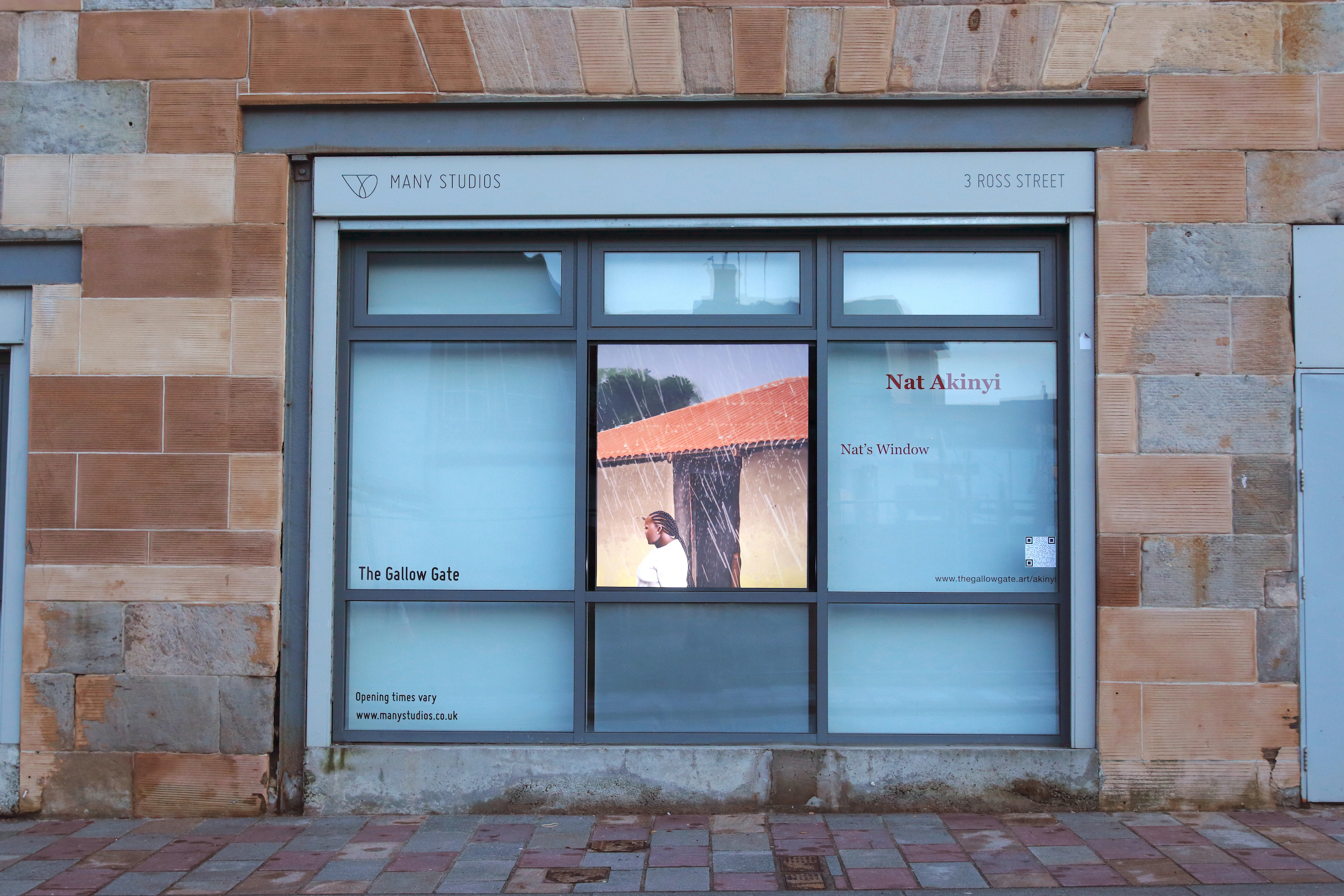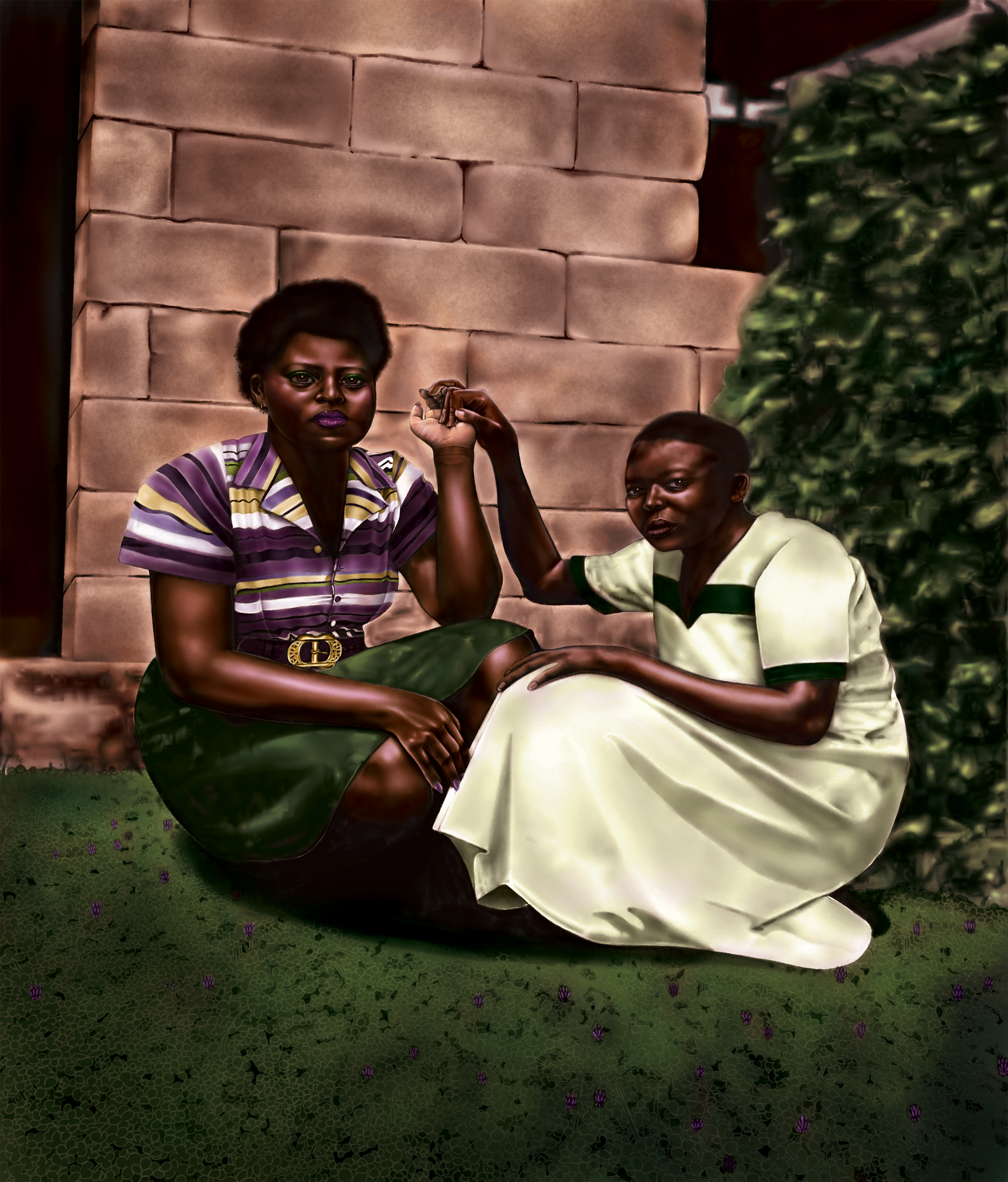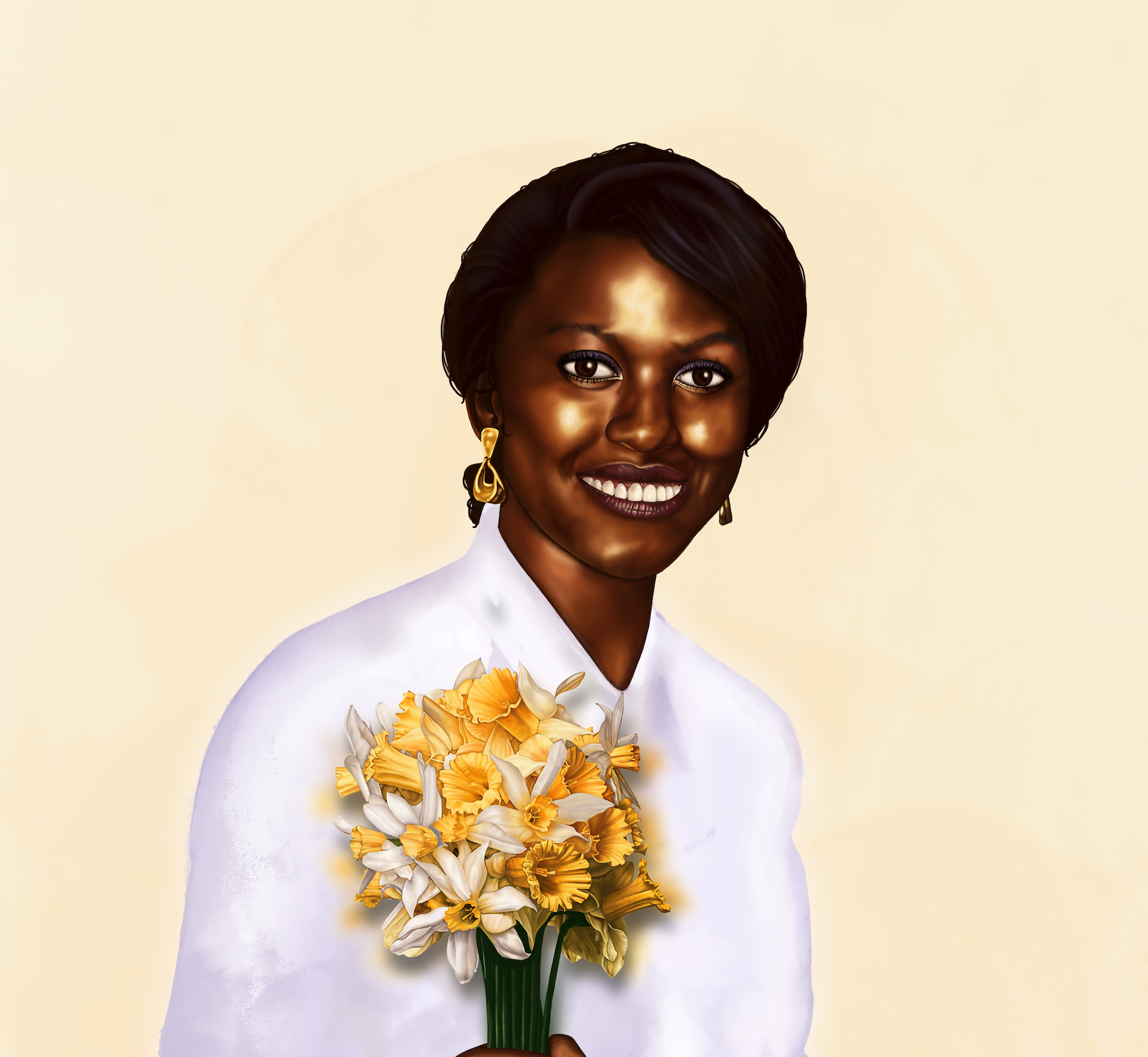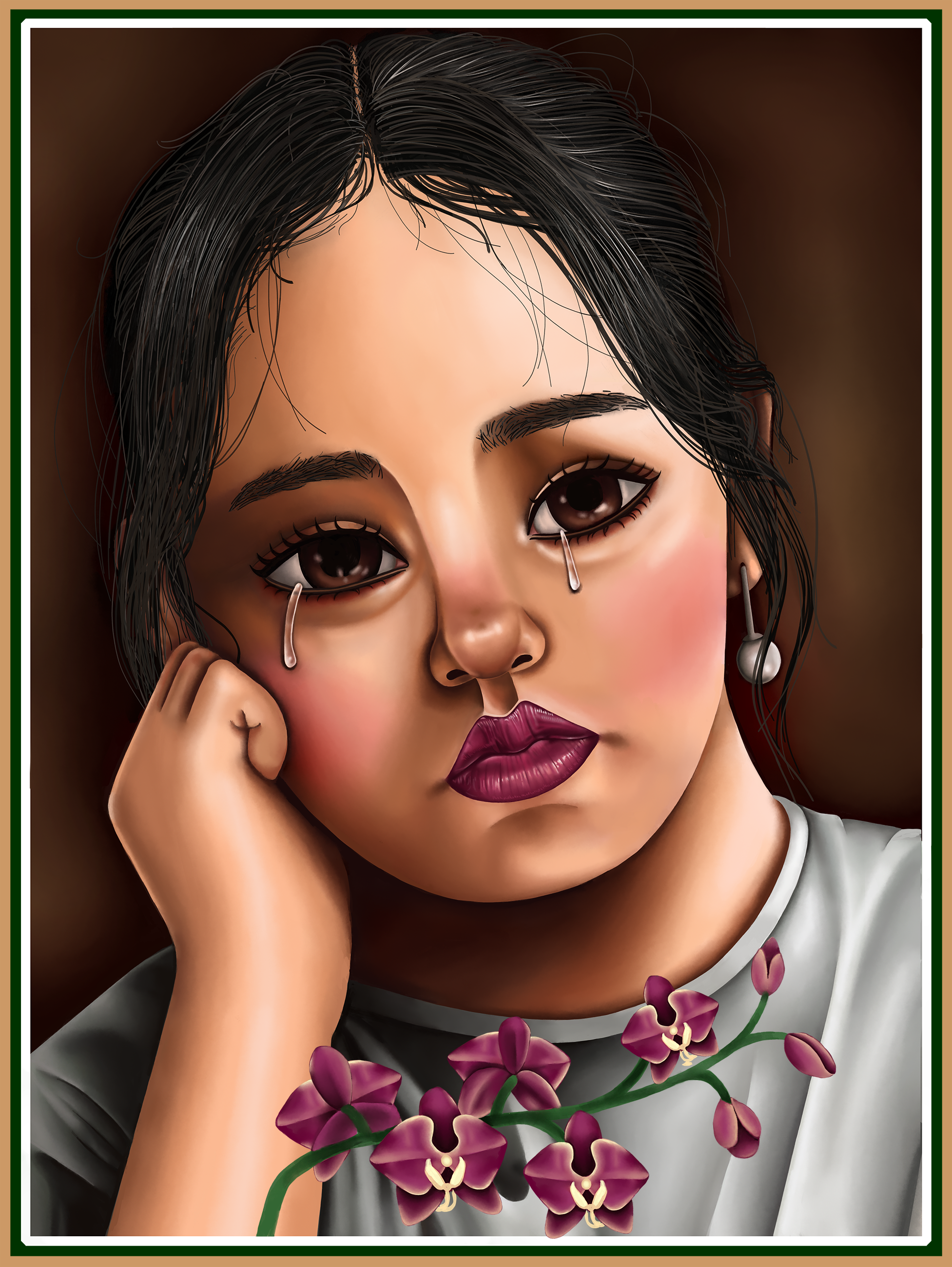Hover over the scene to view the works
(For the best experience of this website we recommend updating your browser to the latest version)
Nat Akinyi: For Good or Ill | 12 April - 9 July 2021
Curated by Natalia Palombo
This exhibition took place across a physical site and online. ‘Nat’s Window’ could be viewed in the window of The Gallow Gate (Many Studios) from 25 January - 4 June 2021.
For Good or Ill explores the relationship between Women and employment in Kenya from the 1920s onwards, through the experiences of the my family members; and considers the impact of colonialism on the changing ideas of women in work.
The exhibition brings together seven paintings, two animations and two sound works, sitting within the context of a living room, specifically my family homes in Nyanza, Western Kenya.
The modelling of the Living Room talks to the consolidation of pre-colonial histories and the influence of the British Empire. The Living Room in a colonial context often mirrors middle-class British aesthetics, yet it is an important space for conserving tradition, and telling family stories.
The painting, handshh (2020), looks at the contradictions that colonial rule brought about in terms of gender and sexuality after austere Christian values were subsumed and traditional African cultures were distorted to regressive traditionalism that perpetuates tribalism, female inferiority, and queerphobia. In the work, opposing figures – performing and rebelling - depict this limited scope of acceptable feminine presentation.
Nyanya (2020) is based on a photograph of my maternal grandmother. Among the first wave of women to enter the workforce in the 1950s, the painting depicts my grandmother as a personal secretary at the Kenya Railways Offices in Nairobi, of which she speaks in the sound piece, grannie exhibition (2020). The Kenyan workplace had all the hallmarks of Western female exploitation with warped aforementioned Kenyan traditionalism. In nyanya the figure sits in a bare room, with the industry at the centre of the image.
Unlike all of the other works, Nat’s Window (2021) theoretically sits out-with the living room and aside from the other works. This animation depicts the view from the window onto the street but connects to the living room through the distinctive sound of rainfall on the corrugated iron sheets on the roof. Clanging on metal is a familiar and often comforting sound that transports one into this domestic Kenyan setting.
Composing a rural Kenyan home today, I consider these complex histories as well as contemporary realities. Lovingly decorated by family matriarchs, these spaces often reveal as much of the personality and identity of households as an image can. And while such domestic scenes are stereotypically feminine and rural life feminised, these spaces represent much more.
The connection to one’s ancestral home after the disruption of colonialism is clearly profound. Modelled partly on the home of my 103-year-old great-grandmother, the living room has held the conversations of five generations, our family history condensed into the cluttered walls.
Text by Nat Akinyi
Edited by Natalia Palombo
Artist Biography
My name is Nat Akinyi. I was born in America and am currently based in the U.K. Akinyi is my Luo name that means that I was born in the morning.
I mostly work digitally, creating digital paintings and animations, often interlinking history and technology, as a way of finding resolve within my own practice and histories. Just as the institution of fine art was created by devaluing the art of people of colour and other marginalized groups, capitalist technological advancement has been attained through the devaluing of the labour, dignity, and lives of people of colour. My work explores the logic that this exploitation rests upon is of blackness as otherness and that black lives, and black suffering has less value.
Also, I studied painting and printmaking at the Glasgow School of Art (spoiler alert: do not go there if you are black because you will likely have a bad time).
For Good or Ill has been curated by Natalia Palombo.The exhibition was coded by Abdulkadir Awel with support from Code Your Future. Special thanks to Becca Thomas for collaboration and technical guidance. This project is funded by the National Lottery through Creative Scotland.
The artist was initially invited to produce a solo exhibition of new works at The Gallow Gate in 2020. Due to the COVID-19 pandemic, travel, work and personal restrictions, we will exhibit one physical work, an animation projected to the street from the gallery windows, accompanied by a digital exhibition of other new works created for this exhibition.
Please visit the site via a tablet or desktop for the best experience
